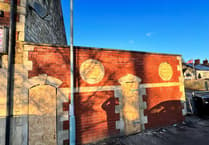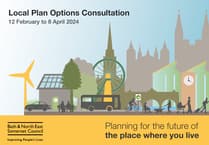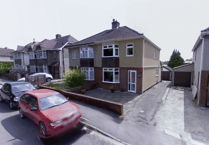Details of changes to plans for a new Bath Rugby stadium at the Rec have emerged recently, but a number of questions remain unanswered. So, what do we know? And what questions remain?
The club has been at the Rec since 1865. In 2013, it revealed its ambitions to redevelop the stadium to provide “a world-class arena that meets Premiership rugby requirements, sustains the club at its historic home ground and improves facilities for a wide range of uses”. The proposals then were for a stadium with capacity for up to 18,000 people but no smaller than 15,000, with offices, changing rooms and a ticket office. Shops and eateries were also mooted.
What has happened since 2013?
Legal action caused a long delay after questions were raised about who owns the Rec, the wider piece of land where the stadium sits. That ended with the establishment of a trust to manage the site, but the ownership is still being disputed.
Stadium for Bath – made up of Bath Rugby, Bath Rugby Foundation and Arena1865 – said on its website: “We consulted on a design for a brand new facility at the Rec almost four years ago. Whilst these proposals presented an exciting opportunity for redevelopment at the Rec, we feel that, given the passage of time, it is only right that we should look again at the design for this unique location.
“This fresh start also provides us with a fantastic opportunity to revisit the potential for realising the wider benefits redevelopment may bring, including the regeneration of the riverside; the creation of a vibrant hub serving professional sport, amateur sport and the wider community; and the realisation of a design solution which not only befits an iconic location, but also complements the renowned architecture of the City of Bath.”
The Rec sits in the heart of the World Heritage Site, so will inevitably have a massive presence, but Stadium for Bath says it will not threaten the status. The scale of the stadium is a major concern for residents, as is the proposed car parking and how it would be accessed.
Car parking
Concept drawings revealed in 2018 suggested there could be as many as 800 parking spaces built under a part or fully synthetic playing surface.
Proposals at a consultation event last year included a car park for up to 700 vehicles. That has now been cut to 550 spaces, which will be available on a short-stay basis. Stadium for Bath claims the overall number of parking spaces in the city will not increase, because others are being lost elsewhere in the city.
The Bath & North East Somerset Council-owned 693-space multi-storey car park in Avon Street is being redeveloped as part of the authority’s flagship Bath Quays North project to creating housing and office space. The scheme will only leave 320 parking bays for public use.
It is not clear where in the city the other 230 spaces are being lost or what the proposals mean for the existing spaces near the stadium. The car park at the Rec is likely to be open to the public 24 hours a day, 365 days a year, although it will be closed to the public on match days.
Stadium for Bath denied that cars driving to the venue would increase congestion, saying: “The car park at the Rec would not increase the amount of vehicles coming into the city. The provision of parking at the Rec would serve vehicles coming from the north and east and as a result reduce cross-city traffic and congestion throughout Bath’s historic core.”
The pitch is being raised by 3.9 metres, but Stadium for Bath says that is not simply so it can build a car park underneath.
Bath Rugby Chief Executive, Tarquin McDonald, said in a video on the Stadium for Bath website that raising the pitch is a fundamental part of the design and necessary for flood prevention. It says the Rec is at risk of flooding that could leave the grounds out of action for months each year, with a financial impact each time. Raising the pitch is in line with guidance from the Environment Agency, Public Health England and Sport England.
The short-stay car park provides the necessary income to balance the initial investment with the future income streams, Stadium for Bath says. Meanwhile, the pitch is now set to be a hybrid surface – a mix of real and synthetic grass.
The size of the stadium
After concerns from residents and various stakeholders, Stadium for Bath this week said it would reduce the overall height of the new stadium by 5.1 metres. The problem is, it is not clear how how tall it was going to be before that reduction.
Plans shared in December 2018 said the highest points of the new west, south and east stands would be 19.8 metres above current pitch level – about 9.5 metres higher than the top of the existing west stand. That was reduced by four metres from the “emerging concepts” released earlier last year.
Bath & North East Somerset Council officers were among those asking it to clarify the height of the new stadium when it considered the proposals ahead of the plans being formally submitted.
In response, Tim Burden from consultants, Turley, said the environmental statement in the planning application will “obviously clarify the exact dimensions and operational nature of the proposed development in detail”. He said: “We are not required to present the full technical reports, fully drafted chapters, nor the assessment at this stage. They will appropriately follow as part of the formal planning application submission and will be subject to scrutiny at that stage.
“The environmental statement will include information that may reasonably be required to enable the local planning authority to come to a reasoned conclusion on the significant effects of the proposed development on the environment. The council can of course ask for further information post-submission if required.”
Mr Turley said the building footprint would likely be in the region of 17,500 sqm, but added: “We are not in a position to confirm the maximum height at this stage, and nonetheless do not consider you need it to satisfy the regulations.”
What else is proposed at the stadium?
Previous proposals have promised an “enhanced city offer”, including conferencing, events, a market hall showcasing local producers, and a 250-cover restaurant with riverside terrace.
The Stadium for Bath website now says there will be space available for independent food and drink providers to showcase their products on non-matchdays, but it is “not creating a retail or market hall”. There will also be a tea-room and bar overlooking the city.
The website says: “We are creating a civic space, with representatives of the community involved in defining how it should be used, and a space which helps support the social purpose objectives for the site.”
Responding to comments from the council last month, Mr Burden said the commercial floorspace within the west stand would amount to approximately 1,750 sqm in total, comprising of a new Bath Rugby shop, fixed concessions, retail pop-ups and seating areas, restaurants and lounges. He said there will also be a lounge for hospitality purposes on match days and flexible conference, meeting or banqueting purposes on some non-match days.
Events areas at ground floor level will be used on occasion as community, charity and rugby club exhibition spaces on non-match days. The pitch will be open for community uses throughout the week, likely to be around thirty hours per week.
Start date
The screening opinion it submitted to the council said work would begin in May 2020 and would be completed by the summer of 2022. The applicants now sound less certain and the website says the dates are “fully dependent on the planning process”.
They face something of a deadline – stands on the north, west and east sides are temporary and the planning permission is set to expire in May 2020.
The council said they were unacceptable as a permanent solution, but they were allowed to remain “to allow for the site to continue to be used as Premiership rugby venue whilst proposals for a permanent solution for the site came forward”.
What has the council said?
An officer from the council’s landscape environment team said the “unroofed, simple, open form and partly temporary stadium seating allows for continuity of historic views towards the green, undeveloped hillsides within and surrounding the city”.
The officer said that the outstanding universal value of the World Heritage Site as a whole is susceptible to a single inappropriate development, and the development could have a significant impact on Grand Parade, Orange Grove, North Parade and Parade Gardens. Any new development will be expected to reinforce the local landscape character and make a positive contribution to views.
The Stadium for Bath website says: “Stadium for Bath will not submit any designs for planning approval that are detrimental to Bath’s World Heritage status.”
The council officer also said: “I would question whether the inclusion of a significant amount of car parking, retail space and the significant alterations to publicly accessible open space will mean the ‘nature of use will be retained’.” He said the development would result in the loss of a number of trees, and replacing them off site was not acceptable. Stadium for Bath said this week that mature trees will be retained along the riverside, with enhanced public realm design.
A planning application will be submitted early in the New Year. If approved, it will be the first time in the Rec’s history that a permanent, four-sided stadium has been built. Three sides would come together under a horseshoe-shaped cantilever roof, while the north stand would be an open terrace.
Stadium for Bath has been asked to clarify the outstanding details.
Stephen Sumner, LDRS




